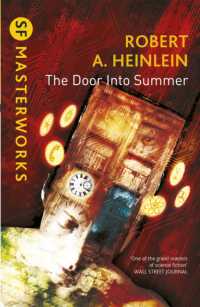Full Description
The German painter Matthias Grünewald (c. 1480-1528) has remained one of the most enigmatic figures of the Renaissance, his artistic identity defined by stylistic complexity and historical obscurity. In this study, Edoardo Villata reexamines Grünewald's oeuvre through a critical reassessment of sources, stylistic developments, and the broader network of artistic influences. Moving beyond established interpretations, Villata explores the relationship between documentary research and comparative analysis, situating Grünewald within the artistic and intellectual landscape of his time. By integrating stylistic analysis, documentary research, and an expansive perspective that extends beyond painting to sculpture and religious thought (two of the most relevant results are the discovery of the role of the sculptor Tilman Riemenschneider for his training and of Johann von Staupitz, Luther's mentor, for the iconography of the Isenheim Altarpiece), Villata reassesses Grünewald's possible connections to contemporary artistic centres, offering a new reading of his production and its historical significance. Much more than a monograph, this study challenges prevailing narratives and highlights the necessity of methodological stringency in art historical research. Essential reading for scholars and specialists, it provides an indispensable contribution to Grünewald studies and Renaissance historiography.
Contents
6 Preface by Pantxika Béguerie-De Paepe
8 Preface to the English Edition
11 Introduction by Edoardo Villata
CHAPTER I
19 The Beginning
CHAPTER II
59 Early Maturity
CHAPTER III
107 Isenheim
CHAPTER IV
183 Italy
CHAPTER V
223 Luther, the Revolt, the Death
251 Notes
281 Bibliography
### Index of Names
### Photo Credits
-

- 電子書籍
- 親友の彼氏【タテヨミ】 10 親友だと…
-

- 電子書籍
- 異世界婿入り放浪記【タテヨミ】第31話…
-

- 電子書籍
- マイフェアフットマン【タテヨミ】第59…
-

- 電子書籍
- 夫婦以上、恋人未満。【分冊版】 66 …




